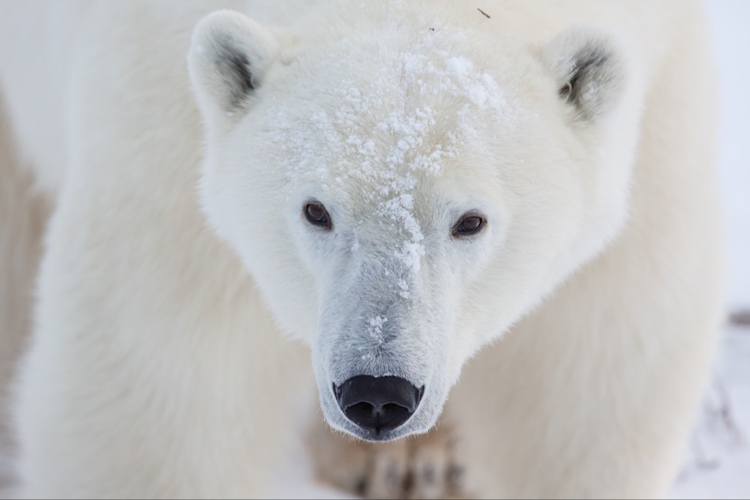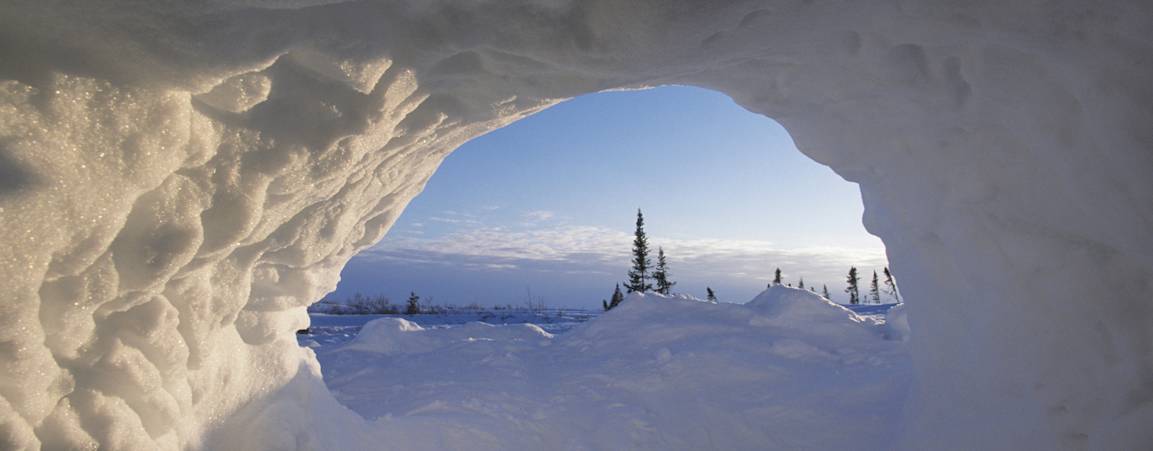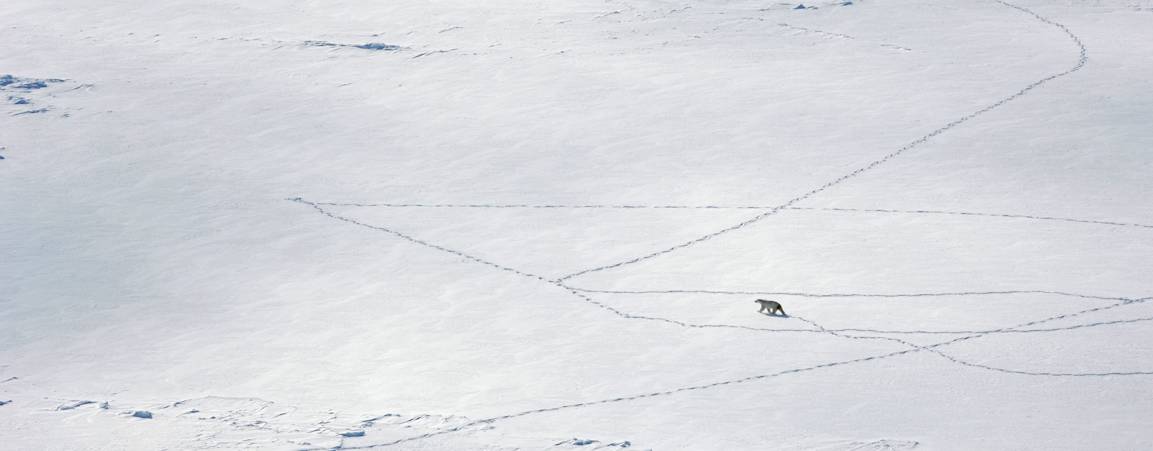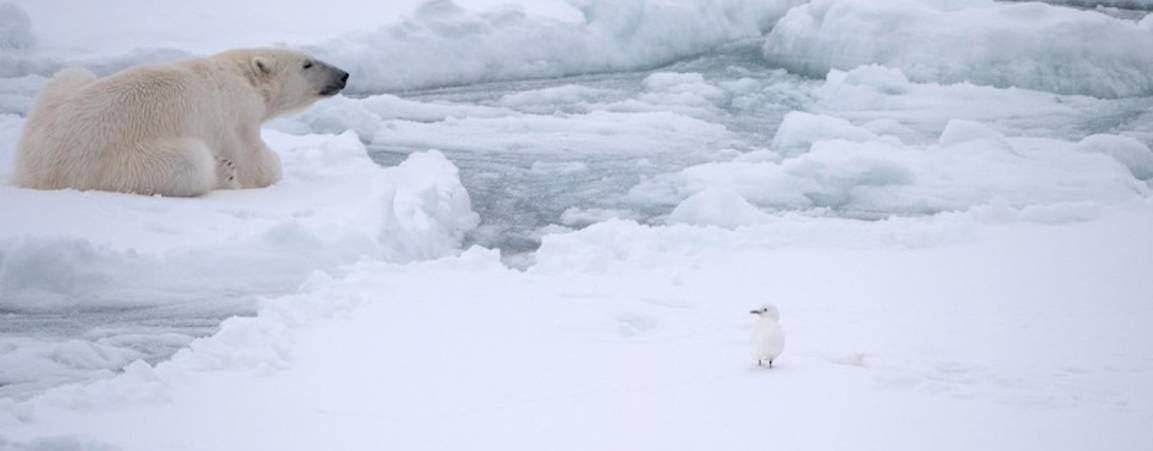Coexistence Research
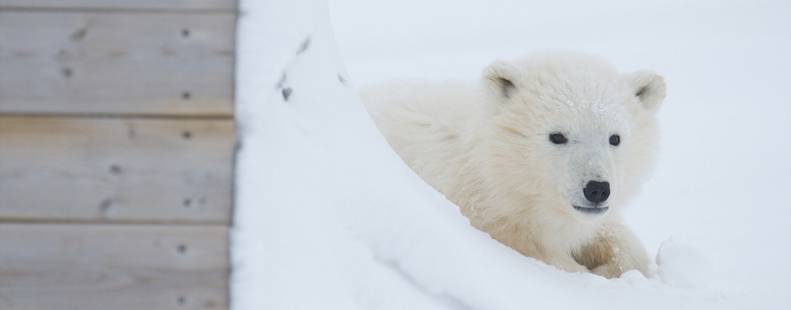
Photo: Daniel J. Cox
Learn about the research we are doing to help polar bears and people live safely with each other.
In the Arctic, conflict between polar bears and people is on the rise and expected to increase as sea ice habitat shrinks. In regions with large summer sea ice loss, polar bears are becoming more frequent visitors to land and staying for longer periods of time. At the same time, human activity is increasing in the region.
Without careful planning and management, tragic outcomes are inevitable, for both polar bears and people.
Polar Bears International is working on a number of fronts to stay ahead of the curve. With the help of a range of partners, including Arctic communities, we are researching ways to reduce polar bear-human encounters and greatly minimize negative outcomes.
Best Deterrence Methods
Bear spray. Cracker shells. Signal flares. What are the best ways to stay safe during an encounter with a polar bear? Protocols are well-established for brown and black bears, but less well-known for polar bears. This is largely because human-polar bear encounters are a recent phenomenon in many Arctic coastal communities.
Working with partners, we are researching the safety and effectiveness of various deterrents in defusing an encounter with a polar bear. Our goal is to share standardized safety messaging, based on the best available science, to keep polar bears and people safe across the North.
These efforts include:
A study led by Dr. Tom Smith of Brigham Young University on the efficacy of bear spray in polar bear country. Researchers conducted lab tests on how well bear spray performed in Arctic conditions, including wind and cold, and found it to be effective in all conditions. The takeaway: Everyone should carry bear spray when in bear country.
A new study led by Gordon Stenhouse on the possible negative consequences of deterrent projectiles that make contact with bears. The testing relied on gelatin-filled blocks, covered by black bear hides, to simulate a bear. It assessed the impact of various projectiles, factoring in temperature, distance, and variations from different manufacturers. Surprisingly, no previous research had been conducted on these rounds, which are widely used for wildlife deterrence across North America. The results should provide much needed guidance for frontline responders on which to deploy under varying conditions and may suggest some not be used at all.
Our most recent research is the start of a study led by Dr. Tom Smith of Brigham Young University to determine the effectiveness of three potential new deterrence tools: ultrasonic sound, drones (which could also help with monitoring), and a new bear spray formula. The new formula may create more opportunities for use in Europe, where bear spray is currently difficult or impossible to obtain for use outside of law enforcement.
Waste Management
It is well known with black and brown bears that properly managing waste can help reduce conflict. This has long held true for polar bears as well. In recent years, changing sea ice patterns have focused attention on this issue as more polar bears are coming ashore in more places, and for longer periods. While on land, the bears are drawn to food sources and attractants, including those from waste bins and landfills.
In response, we initiated an overview publication on polar bears and landfills led by Dr. Tom Smith at Brigham Young University, with partners from several institutions, followed by a waste management study to examine innovative ways to reduce attractants to polar bears. This is important because waste management is a problem across the North. Burying is not possible or sustainable in settings with frozen soils and impossible in bedrock. Yet open dumps are an invitation to trouble, leading to food-conditioned bears, conflict, and frequently, increased mortality. Open dumps can also spread disease as several species co-occur at landfill sites.
The initial study assessed available waste management options and their costs, providing communities with ideas on the tools as they consider future options.
Project partners include the Town of Churchill, Canada.
Polar Bear Attacks and Causes
Understanding the causes of polar bear attacks on people is critical to ensuring both human safety and polar bear conservation. As part of his participation in the Polar Bear Range States Conflict Working Group, our senior director of conservation, Geoff York, contributed to a comprehensive study on the frequency and causes of polar bear attacks. The study, led by Dr. James Wilder of the U.S. Fish and Wildlife Service with co-authors from the Range States Conflict Working Group, collected, researched, and analyzed published accounts of polar bear attacks on humans in the time period from 1870 to 2014.
The findings added greatly to our understanding of why polar bears attack people. The report’s authors found that “nutritionally stressed adult male polar bears were the most likely to pose threats to human safety” with 61 percent of bears that attacked humans in below-average body condition.
As the Arctic warms, and more polar bears in poor body condition spend more time on shore, in close proximity to people, attacks are expected to increase. Careful planning now can help communities adapt.
Project partners include the U.S. Fish and Wildlife Service and the Polar Bear Range States Conflict Working Group, composed of members from the five polar bear “range states”: Canada, Greenland, Norway (Svalbard), Russia, and the U.S.
Bear-dar “Detect to Protect” Systems
For the past several years, Polar Bears International has been testing whether ground-based radar could be used to detect polar bears, serving as an early warning system that could alert communities or work sites to approaching bears, part of our ongoing efforts to protect polar bears and people, keeping both safe.
We chose the Town of Churchill, Canada, as the ideal place for testing this equipment because polar bears reliably gather there each fall as they wait for the sea ice to form. After testing several different types of radar to determine their effectiveness, we narrowed our choices to Spotter Global.
We are nearing the point where we can turn the project over to partners for fine-tuning and final development. For example, after testing the AI at the Assiniboine Park Zoo in the summer of 2024 to reliably recognize polar bears, we've planned a final season of testing in Churchill with wild polar bears in the fall of 2024. We plan to publish our findings and make our test unit available to partners for real-time use in Churchill or other communities, pending needs and capabilities.
Project partners include the Town of Churchill, Spotter Global, Brigham Young University, Utah’s Hogle Zoo, San Diego Zoo Wildlife Alliance, and the Assiniboine Park Zoo.


